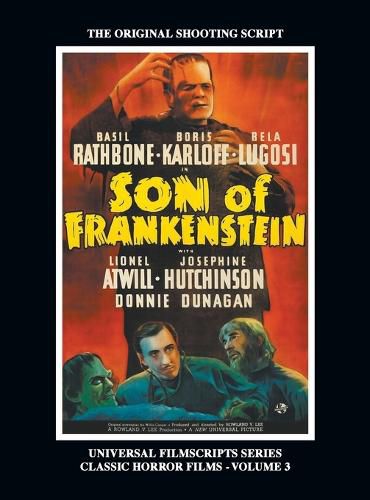Readings Newsletter
Become a Readings Member to make your shopping experience even easier.
Sign in or sign up for free!
You’re not far away from qualifying for FREE standard shipping within Australia
You’ve qualified for FREE standard shipping within Australia
The cart is loading…






This title is printed to order. This book may have been self-published. If so, we cannot guarantee the quality of the content. In the main most books will have gone through the editing process however some may not. We therefore suggest that you be aware of this before ordering this book. If in doubt check either the author or publisher’s details as we are unable to accept any returns unless they are faulty. Please contact us if you have any questions.
With the British ban on horror films in effect and the chief producer of movies of this genre, Universal studios, now out of the hands of the Laemmles, the future for the once popular fright film looked in doubt. The film career of Bela Lugosi particularly appeared in jeopardy due to his strong association with horror since his 1931 signature role of Dracula. Boris Karloff on the other hand was a more versatile performer and had managed to keep his career afloat, though by appearing in lesser vehicles, such as the "Mr. Wong" series.
Fortuitous circumstances were to re-establish both the horror movie and its two major screen assets, Karloff and Lugosi, when Universal discovered audiences still loved to be thrilled and chilled by the original movie monsters and were inspired to put into production the third of the Frankenstein series, to be titled SON OF FRANKENSTEIN.
Edited by film historian Philip J. Riley with additional information provided by classic horror movie expert Greg Mank, MagicImage Filmbook's 50th anniversary edition of SON OF FRANKENSTEIN details the intriguing backstory and production history of what became Universal's most expensive yet most profitable Frankenstein film. Included for film fans are the original shooting script - and discarded - and extras ranging from production stills and rare behind-the-scenes photos, posters and pressbook to newspaper coverage of the time.
A definite treasure for classic collectors.
$9.00 standard shipping within Australia
FREE standard shipping within Australia for orders over $100.00
Express & International shipping calculated at checkout
This title is printed to order. This book may have been self-published. If so, we cannot guarantee the quality of the content. In the main most books will have gone through the editing process however some may not. We therefore suggest that you be aware of this before ordering this book. If in doubt check either the author or publisher’s details as we are unable to accept any returns unless they are faulty. Please contact us if you have any questions.
With the British ban on horror films in effect and the chief producer of movies of this genre, Universal studios, now out of the hands of the Laemmles, the future for the once popular fright film looked in doubt. The film career of Bela Lugosi particularly appeared in jeopardy due to his strong association with horror since his 1931 signature role of Dracula. Boris Karloff on the other hand was a more versatile performer and had managed to keep his career afloat, though by appearing in lesser vehicles, such as the "Mr. Wong" series.
Fortuitous circumstances were to re-establish both the horror movie and its two major screen assets, Karloff and Lugosi, when Universal discovered audiences still loved to be thrilled and chilled by the original movie monsters and were inspired to put into production the third of the Frankenstein series, to be titled SON OF FRANKENSTEIN.
Edited by film historian Philip J. Riley with additional information provided by classic horror movie expert Greg Mank, MagicImage Filmbook's 50th anniversary edition of SON OF FRANKENSTEIN details the intriguing backstory and production history of what became Universal's most expensive yet most profitable Frankenstein film. Included for film fans are the original shooting script - and discarded - and extras ranging from production stills and rare behind-the-scenes photos, posters and pressbook to newspaper coverage of the time.
A definite treasure for classic collectors.